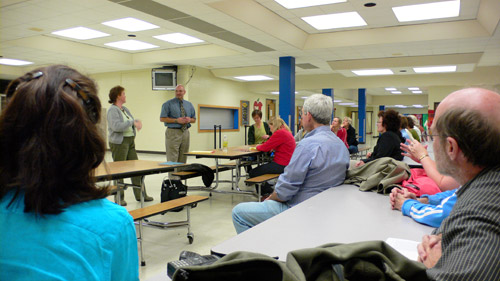Teachers, students, employees, employers, everyone these days, it seems, is being exhorted to think, act, imagine and perform “Outside the Box.”
However, for students, there is still quite a bit that may be found Inside the Box for them to learn and get good at before they wander off into OutBoxLand.
Inside the Box there still await grammar, the multiplication tables, the periodic table, Boyle’s Law, the Glorious Revolution, the Federalist Papers, Shakespeare, Isaac Newton, Bach, Mozart, Giovanni Bellini, recombinant DNA, Albrecht Durer, Edward Gibbon, Jan van Eyck, and a few other matters worth their attention.
Before the Mission Control people in Houston could solve the unique, immediate, and potentially fatal “Out of the Box” problems with the recovery of Apollo 13 and its crew, they had to draw heavily on their own InBox training and knowledge of mechanics, gases, temperatures, pressures, azimuth, velocity and lots of other math, science, and engineering stuff they had studied before. They may have been educated sitting in rows, and been seen in the halls at Mission Control wearing plastic pocket protectors, but in a very short time in that emergency they came up with novel solutions to several difficult and unexpected problems in saving that crew.
It seems clear to me that a group of ignorant but freethinking folks given that same set of novel tasks would either have had to watch Apollo 13 veer off into fatal space or crash into our planet with a dead crew on board, in a creative way, of course.
Many situations are less dramatic demonstrations of the clear necessity of lots of InBox education as preparation for any creative endeavor, but even high school students facing their first complete nonfiction book and a first history research paper when they arrive in college would have been much better off if they had been assigned a couple of complete nonfiction books and research papers before they left high school.
Basketball coach John Wooden of UCLA was of course happy with players who could adapt to unexpected defenses on the court during games, but according to Bill Walton, when he met with a set of new freshmen trying to make his team, the first thing he taught them was how to put on their socks…Perhaps some of his (and their) success came because he was not above going back into the Old Box to lay the groundwork for the winning fundamentals in college basketball.
Many teachers and edupundits decry the insufficiency of novelty, creativity and freethinking-out-of-the-box in our schools, but I have to wonder how many have realized the overriding importance of the education equivalent of having students put on their socks the right way?
Basic knowledge in history, English, physics, Latin, biology, math, and so on is essential for students in school before they can do much more than fool around with genuine and useful creativity in those fields.
True, they can write about themselves creatively, but if the teacher has read Marcel Proust, and would share a bit of his writing with the students, they might come to see that there is creativity in writing about oneself and there is also fooling around in writing about oneself.
Samuel Johnson once pointed out that: “The irregular combinations of fanciful invention may delight a-while, by that novelty of which the common satiety of life sends us all in quest, but the pleasures of sudden wonder are soon exhausted…”
The pleasures of foolish playacting Outside of the Box of knowledge and skill by students (and their teachers: witness the damage shown in Dead Poets Society) may delight them for a time because they are tired of the hard work involved in learning and thinking about new knowledge in school, but the more they indulge and are indulged in it, the lower our educational standards will be, and the worse the education provided students in our schools.
Novelty and innovation have their place and there they are sorely needed, but the quality of that innovation depends, to a great extent, on the quality of the knowledge and skill acquired while students were still working hard Back in the Box.
www.tcr.org
